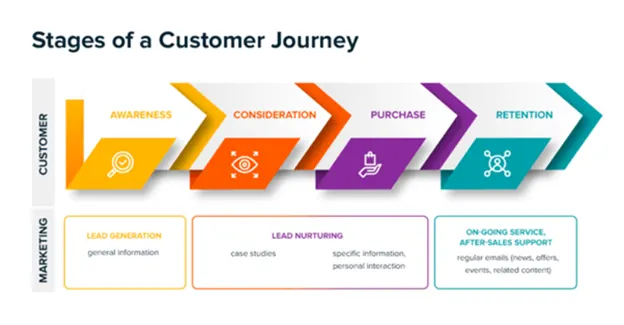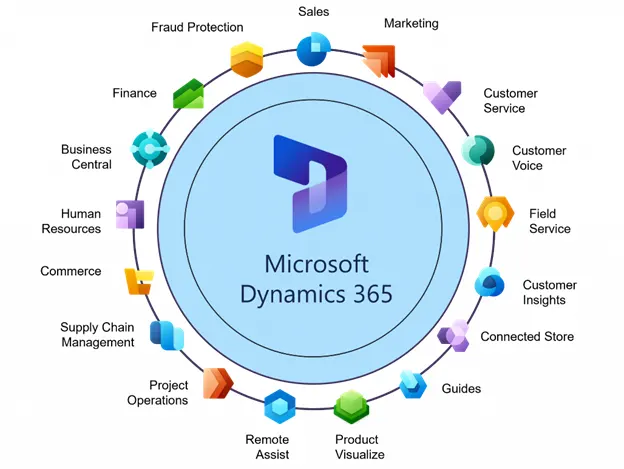Is Marketing Automation with Dynamics 365 More Hype or Substance?

Image source – https://msdynamicsworld.com/
Many brands speak about marketing automation like a silver bullet transforming chaotic lead generation into a predictable sales pipeline powered by technology.
But results fall short of matching expectations leaving leaders skeptical whether capabilities redeem hype.
- Does Dynamics 365 help orchestrate multi-step lead nurturing sequences?
- Can it respond contextually to demonstrated buyer signals, automatically personalizing the next best actions?
- Are there guardrails preventing automation from subscribers and prospects?
Let’s unpack the realities behind the hype mapping automation capabilities against core funnel stages pacing leads methodically into sales opportunities.
Attract Ideal Prospects Predictably
Success moving leads to sales begins attracting viable prospects aligned to solution fit cost-effectively.
Dynamics 365 natively integrates multiple tactics matching outreach to detected buyer lifecycle stage and content affinities automatically avoiding spray-and-pray approaches wasting resources.
Utilizing analytics, ideal customer profiles get defined by quantifying historical win patterns.
Online/offline behavior monitoring then detects subset groups exhibiting similar economic, technical, or usage characteristics scoring sales readiness in real time.
Sophisticated algorithms even predict the likelihood of embracing introduced offerings by assessing heuristics like research queries, competitor mentions, press release reactions, and capability inquiries.
With ideal segments and buying signs clarified in dynamics, orchestration activates.
Behavioral, contextual, and lookalike targeting focuses advertising exposure to detected subsets aligned timing interactions to moments exhibiting consideration signals.
Campaign management controls spending by staying within returns thresholds by channel avoiding over-delivery against disengaged users.
Personalized social/email content and multi-step nurture sequences map to research phases addressing common questions, misconceptions, and differentiators for each commercial category and product set.
Lead capture forms load directly into the Dynamics 365 database when visitors demonstrate a legitimate interest—sophisticated analytics power predictable prospect attraction scalably without overextending resources.
Cultivate Early Relationship Signs
Converting interested visitors into viable leads is less about interrogation tactics and more about cultivating relationship signs.
Early content offers demonstrate understanding around frequent struggles hoping to build goodwill across previously anonymous traffic sources through Dynamics 365 lead dashboard updates.
Site personalization greets prospects by industry and role to establish affinity quickly through familiar terminology and peer use cases.
Chatbots handle common inquiries contextually from product drill downs to pricing structures building familiarity by interacting with visitors directly.
Downloadable utilities like savings calculators, replacement cost estimators, and compatibility assessments deliver standalone value earning attention beyond core offerings.
Soon first name familiarity, industry specialization, and role articulation coupled with conversational tone demonstrate sophistication earning trust around truly positioning Dynamics 365 customer Engagement needs first.
Once core education, use case relevance, and solution expertise are established through initial nurturing, lead qualification metrics capture propensity converting interest into pipeline prioritizing sales team bandwidth accordingly.
Effective early relationship building begets eventual sales prioritization.
Map Journeys Matching Buyer Requirements
Despite best efforts to attract ideal prospects demonstrating behaviors predicting commercial value, sales qualification rarely occurs through a single linear sequence for complex solutions.
Buyer journeys traverse through customized phases spanning awareness, consideration, solution validation, and selection milestones unique for each company based on their priorities.
Sophisticated Dynamics 365 automation accounts for these nonlinearities through modular journey construction.
Intelligent builders allow drag-and-drop assembly of multi-wave interactions incorporating email sequences, customized content blocks, conditional decision logic around qualification metrics and integration triggers into surrounding CRM and e-commerce systems.
This flexible journey design accounts for lengthy research periods, long sales cycles, complex chain of command approvals, and evaluation event delays typically stalling enterprise deals.
Adaptive nurturing increases relevance applied automatically based on demonstrated interactions and content consumption accelerating sales cycle velocities over one-size-fits-all rigidity.
Equally, turnkey templates map common new customer, client expansion, product adoption, and retention pathways for lighter-weight eCommerce subscription models and small business product catalogs.
Usability maximizes accessibility for non-technical users managing the majority of transaction flow minus heavy involvement in IT or agencies.
Dynamics 365 nimbly adjusts matching evolving urgency, priority shifts and system usage signals unique to each customer demonstrating engagement.
Adaptive automation builds confidence, trust, and relationship history – the foundations for the qualified pipeline.
Empower Self-Service Buying Channels

Image Source – https://adynamics.com.my/
Efficiently migrating leads into sales requires addressing procurement objections head-on.
Prospects want a firm understanding of implementation requirements, change impacts, total cost of ownership trade-offs, and user permissions before committing to budgets.
Too often teams using marketing automation treat messaging generically avoiding specifics hoping ambiguity masks short-term limitations losing late-stage credibility.
Dynamics 365 helps teams leverage selective transparency as an ally earning trust, aligning capabilities more tightly to needs, and empowering visitors to navigate details independently without hand-holding or delays from direct sales contact.
Interactive configuration simulators guide stakeholders in sizing components matching ranked priorities whether emphasizing security, maximizing support, aligning to budget thresholds, or accommodating growth.
Live policy and subscription previews call out specific service entitlements, and access permissions for internal vs. external users and integrate surrounding IT ecosystems bringing total ownership efforts into focus.
Embedded cost/benefit models quantify before and after processing throughput, accuracy, and end-user productivity returns by line of business justifying investments.
This education through self-guided exploration informs stakeholder consensus, confirms actual requirements against assumptions, and sizes solutions tightly mitigating surprises down the line.
Rather than hand wave details until later in-person meetings, Dynamics 365 interaction logs capture critical signals uncovering objections early while documenting configured elements for efficient opportunity forwarding once sales meetings commence.
Early transparency and self-service accelerate deal velocity after lead scoring warrants engagement.
Close Deals Methodically
Despite negative connotations surrounding heartless automated lead hand-off forcing premature sales interactions, sophisticated marketing automation platforms recognize moving warmed-up subscribers into active opportunity status requires subtler, contextual stage gates.
Dynamics 365 provides tools monitoring dozens of behavioral dimensions determining when prospects signal willingness, capability, and urgency converting from education mode into active solution configuration warranting sales consultation.
Patterns like demo request frequency, peer referral surges, expanding usage signal commercial budgets unlocked, and rising research on capabilities document transition mileposts.
At the same time, lead scoring algorithms quantify aggregate activity numerically as buying temperature increases.
Sudden drops signal hesitation requiring marketing actions like viability reinforcement through analyst reports or regional capability showcasing addressing uncertainty before re-engaging.
And multi-threaded deal stage classifications distinguish technical vs business vs executive champion requirements mapping progression independently into sales pipelines.
Marketing automation handed off prematurely without contextual signals risks order rejection. Dynamics provides tools certifying the timing proves optimal increasing win rates.
Optimize Lead Scoring Models Predictively
Simple lead scoring models set static thresholds around activities like email opens, content downloads, site pages visited, and demo requests to determine sales-readiness.
However, these arbitrary point summations poorly predict outcomes lacking contextual behavioral analysis available through Dynamics 365 AI capabilities.
Predictive scoring incorporates hundreds of enriched data variables better determining commercial potential.
Details like past purchase types, product usage signals, peer firm graphic comparisons, contact title fluency, active business events, market segment growth dynamics, and journey stage progress get assessed by algorithms trained on historical deal data.
This determines optimal commercial potential through analysis – not guesses. Outcomes improve further through continuous model learning.
By comparing algorithmic predictions against actual sale results, scoring formulas automatically tune weighting applied to specific variables demonstrating linkage closing deals.
Sudden new success trends around buyer persona combinations uncovered through cluster analysis may warrant tweaks scoring titles, seniority mix, and company types higher for a period.
Content download patterns may emerge tied to recurring order values. Journey stage duration patterns adjust forecast accuracy.
Scoring models compound effectiveness automatically through machine learning advancing precision matching detected opportunity patterns over-relying on fixed arbitrary thresholds incorrectly set initially.
Orchestrate Omni-Channel Campaign Convergence
Too often departments run disjointed campaigns on similar topics wasting budget and frustrating audiences through disjointed messaging.
Marketing focuses on standalone offers via email. Sales promote exhausted capabilities through cold calling.
Service nudges adoption fueling churn risks offsetting gains. And partners highlight niche components missing integrated context losing executive backing.
Dynamics 365 provides tools for converging integrated campaigns across channels, constituencies, and stages aligned to capability promotion milestones.
Unified access to core content asset libraries, journey mapping visualizations, and customer segment clarity ensures coordinated consistent access across groups. Standard taxonomy around products, solutions, bundles, and usage scenarios provides common vocabulary avoiding confusion.
Centralized lead intake with visibility into attribution by channel and promotional source enables transparent measurement guiding budgets.
Bridging analytics exposes multi-touch synergies optimizing cadence, frequency, and purpose maximizing lift collectively.
Together this continuity capability converges disparate efforts into unified journeys without limiting autonomy.
Core content blocks get injected ensuring capability conveyance consistency. Local customization retains uniqueness for each population and channel.
Overarching automation ensures complementary vs competing presence. This omni-channel influence through Dynamics 365 exceeds fragmented efforts.
Apply Agile Optimization Cycles
The most impactful marketing automation capabilities remain useless lacking mechanisms that continuously improve relevance, timing, and positioning.
Sophisticated brands reject prolonged launches with delayed feedback in favor of agile optimization cycling through integrated iteration loops every 6-8 weeks assimilating insights faster.
Dynamics 365 natively supports this approach through composable modules, customer analytics, and embedded telemetry measuring business goal lift – not just tactical campaign metrics.
Configurable journey templates act as pivot points refined quicker through drag-and-drop enhancement of integrated multi-channel components.
Customer data platform integration repopulates models with the latest propensity scores, microsegment classifications, journey stage advancement, and fiscal marker progression through ongoing analytics.
A/B testing Treatment/control groups scientifically validate content performance for relevance.
And real-time reporting dashboards tie campaign usage lift to downstream conversion metrics on unified goals shared enterprise-wide beyond channel silos. Together these functionalities shift from annual planning to continual optimization getting messaging right.
Verify Campaign Effectiveness Holistically
Too often marketing and sales groups lack shared visibility on whether campaigns influence downstream buying stages effectively or simply pad meaningless vanity metrics.
Dynamics 365 natively unifies multi-dimensional analytics tracing subscriber behaviors across milestones and quantifying tangible conversion impact tied to revenue goals.
Integrated dashboards connect lead generation sign-up rates with sales-qualified deal participations by campaign sources revealing true return on investment.
Click-through behaviors diagnose content resonating across personas and stages most aligned to message priorities whether for awareness lift or consideration conversion.
Traffic source contribution contrasts organic discovery vs paid search vs social network virality for channel prioritization.
And long term correlation analysis confirms optimal multi-touch attribution validating full buyer journey sequencing exceeding the duration of campaign periods through data science services – impossible manually.
Shared access democratizes autonomous optimization of integrated efforts based on business metrics vs channel-specific tactical outputs.
By quantifying campaign lift on core growth and expansion goals at the micro-segment level, groups receive clear return guidance on collective progress in the last mile battle to hit ultimate sales targets through orchestration.
This prevents overemphasis on front-end metrics lacking meaning to final decision-makers focused on revenue influence rather than tactical promotions.
Does this overview mapping Dynamics 365 against intelligent demand orchestration, relationship nurturing and sales handoff signify credible solutions warranting pilot consideration?
Where could more pronounced capability gaps still inhibit execution for your commercial model?
What existing in-house platforms or agency dependencies might this consolidate or eliminate if successful for top/middle funnel stages?
Does the approach resonate philosophically with your ideal vision around technology-augmented go-to-market orchestration? Welcome your thoughts.





